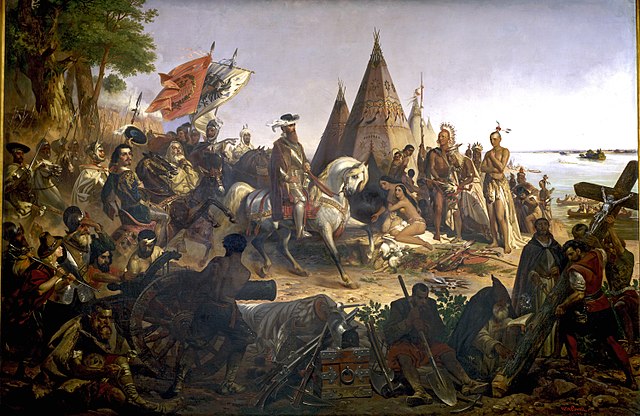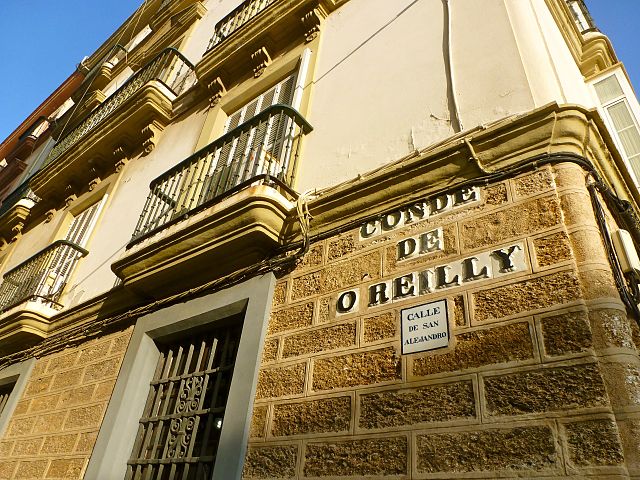Alejandro O'Reilly, 1st Count of O'Reilly, KOA, English: Alexander, Count of O'Reilly, Irish: Alastar Ó Raghallaigh, was an Irish-born military reformer and Inspector-General of Infantry for the Spanish Empire in the second half of the 18th century. O'Reilly served as the second Spanish governor of colonial Louisiana, and is the first Spanish official to exercise power in the Louisiana territory after France ceded it to Spain following defeat by Great Britain in the Seven Years' War. For his much appreciated services to the Crown of Spain, O'Reilly was ennobled as a conde de O'Reilly, and granted a coat of arms. He fell out of favour after his calamitous failed attempt at the Invasion of Algiers.
Portrait by Francisco Goya
Street in Cádiz, which honours the memory of Marshal Alejandro, Conde de O'Reilly (1723, Baltrasna, County Meath, Ireland – 1794 in Bonete, Spain.
Louisiana, or the Province of Louisiana, was a province of New Spain from 1762 to 1801 primarily located in the center of North America encompassing the western basin of the Mississippi River plus New Orleans. The area had originally been claimed and controlled by France, which had named it La Louisiane in honor of King Louis XIV in 1682. Spain secretly acquired the territory from France near the end of the Seven Years' War by the terms of the Treaty of Fontainebleau (1762). The actual transfer of authority was a slow process, and after Spain finally attempted to fully replace French authorities in New Orleans in 1767, French residents staged an uprising which the new Spanish colonial governor did not suppress until 1769. Spain also took possession of the trading post of St. Louis and all of Upper Louisiana in the late 1760s, though there was little Spanish presence in the wide expanses of what they called the "Illinois Country".

De Soto claiming the Mississippi, as depicted in the United States Capitol rotunda
The Cabildo in New Orleans, originally called "Casa Capitular", served as the headquarters for the Spanish governor when Louisiana was under Spanish rule. The building today showcases a mix of designs: the preserved Spanish colonial features like the two-story layout with wraparound balconies and rounded arches, was later added in 1847 a revival French-inspired mansard roofs. Capping it all off is a dome-like turret that gives a nod to its Spanish roots.
Señora de Balderes and her baby, family native of Nueva Orleans, Spanish colonial Louisiana, by José Francisco de Salazar (painter born in Mérida, Mexico), ca. 1790. The family lived on Calle Real street in what is now called the "French Quarter". Louisiana State Museum
Portrait of Marianne Celeste Dragon, c. 1795, a wealthy land-owning woman of mixed race who later married a white man in Spanish colonial Louisiana, painted by José Francisco de Salazar.






